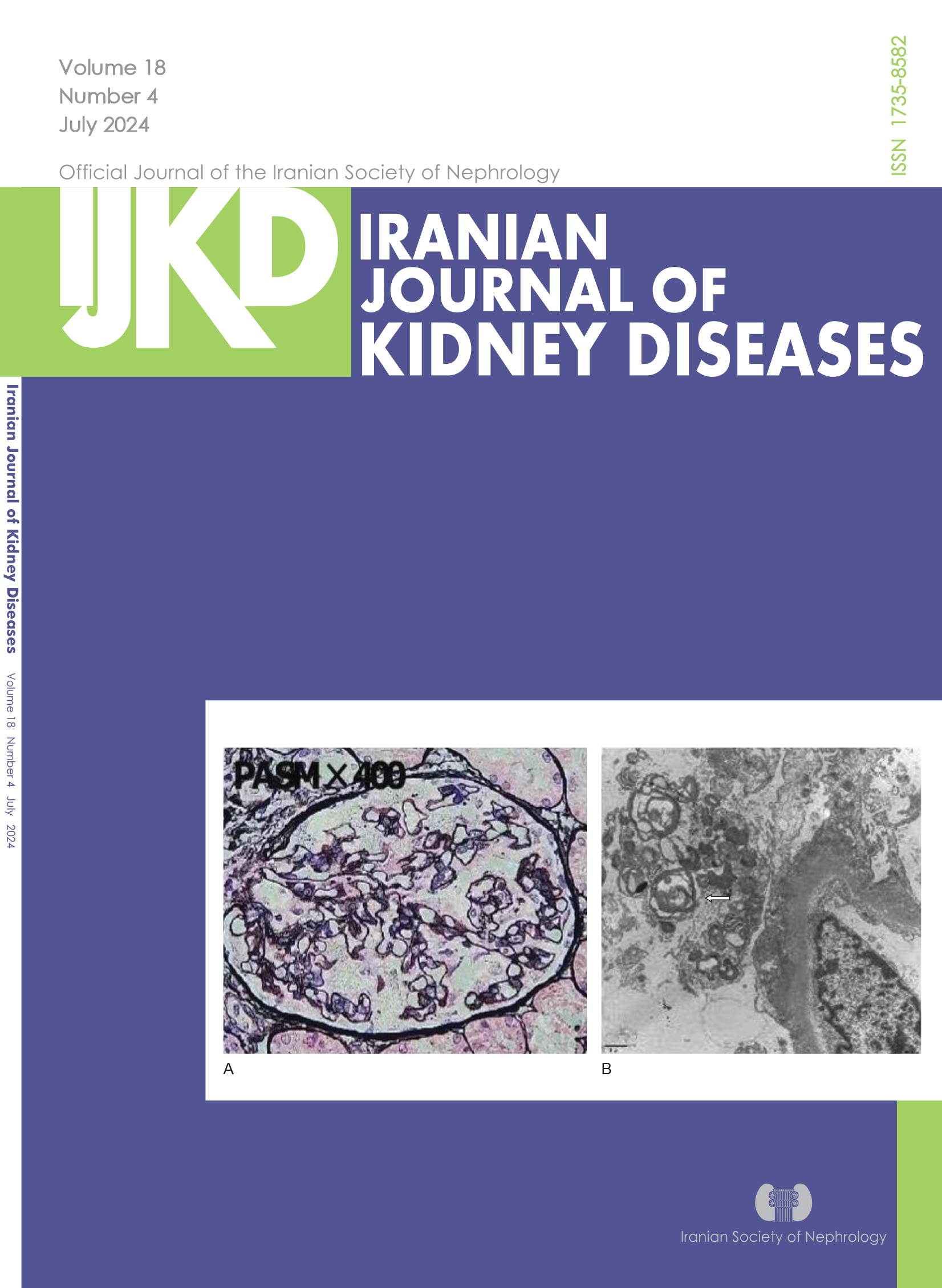Effect of Exchange Systems and Procedure on Long Term Peritonitis in ESKD Patients Undergoing CAPD :A Retrospective Comparative Cohort Study
Keywords:
Incidence;, Exchange method;, Technique survival, Peritonitis-free survivalAbstract
Introduction. Peritoneal dialysis utilizes two distinct double-bag exchange systems (ANDY-Disc from Fresenius Medical Care in Bad Homburg, Germany, and DIANEAL from Baxter in Deerfield, IL).
These systems are widely used across the globe. The long-term outcomes of peritonitis with different types of treatment are still questionable. Therefore, we conducted a retrospective comparative cohort study to assess the long-term impact of these two distinct exchange procedures on the true peritonitis rate and the technique durability in real-world settings.
Methods. One hundred and twenty patients, treated with a double-bag exchange system in a Songklanagarind Hospital, located in the south of Thailand from January 2009 to December 2020 were included. The primary outcome was the incidence rate of peritonitis by treatment arm (ANDY-disc and DIANEAL). Secondary outcomes included the pathogenic organism causing peritonitis, time to the first peritonitis, and survival technique between the two systems.
Results. The peritonitis rate for patients using the ANDY-disc in continuous ambulatory peritoneal dialysis (CAPD) was 0.28 episodes per patient-year, while the DIANEAL group had a rate
of 0.29 episodes per patient-year. There was no difference in the peritonitis rate between the two groups (P = .816). Gram-positive bacterial peritonitis accounted for 33.4% in the ANDY-disc arm
and 43.7% in the DIANEAL arm. The 10-year technique survival was 86.1% in the ANDY-Disc group and 73.5% in the DIANEAL group; this did not reach statistical significance.
Conclusion. The ANDY-Disc and DIANEAL exchange systems are comparable in the long-term incidence of peritonitis. Both systems have similar long-term technique survival. However, this should be confirmed by a high-quality trial.
Downloads
References
Pérez Fontan M, Rodríguez-Carmona A, García-Naveiro R, et al. Peritonitis-related mortality in patients undergoing chronic peritoneal dialysis. Perit Dial Int. 2005 Jun;25(3):274-84.
Hsieh Y-P, Chang C-C, Wen Y-K, et al. Predictors
of peritonitis and the impact of peritonitis on clinical outcomes of continuous ambulatory peritoneal dialysis patients in Taiwan - 10 years’ experience in a single centre. Perit Dial Int. 2014 Feb;34(1):85-94.
Brown MC, Simpson K, Kerssens JJ, et al. Peritoneal dialysis-associated peritonitis rates and outcomes in a national cohort are not improving in the post-millennium (2000-2007). Perit Dial Int. 2011 Dec;31(6):639-50.
Sipahioglu MH, Aybal A, Unal A, et al. Patient and technique survival and factors affecting mortality on peritoneal dialysis in Turkey: 12 years’ experience in a single centre. Perit Dial Int. 2008 Jun;28(3):238-45.
Woodrow G, Turney JH, Brownjohn AM. Technique failure in peritoneal dialysis and its impact on patient survival. Perit Dial Int. 1997 Aug;17(4):360-4.
Li PK-T, Szeto CC, Piraino B, et al. ISPD peritonitis recommendations: 2016 update on prevention and treatment. Perit Dial Int. 2016 Sep 10;36(5):481-508.
Daly C, Cody JD, Khan I, et al. Double bag or Y-set versus standard transfer systems for continuous ambulatory peritoneal dialysis in end-stage kidney disease. Cochrane Database Syst Rev. 2014 Aug 13;(8):CD003078.
Daly CD, Campbell MK, MacLeod AM, et al. Do the Y-setnd double-bag systems reduce the incidence of CAPD peritonitis? A systematic review of randomized controlled trials. Nephrol Dial Transplant. 2001 Feb;16(2):341-7.
Li PK, Szeto CC, Law MC, et al. Comparison of
double-bag and Y-set exchange systems in continuous ambulatory peritoneal dialysis: a randomized prospective multicenter study. Am J Kidney Dis. 1999 Mar;33(3):535-40.
Wong H-S, Ong L-M, Lim T-O, et al. A randomized, multicenter, open-label trial to determine peritonitis rate, product defect, and technique survival between ANDY-Disc and UltraBag in patients on CAPD. Am J Kidney Dis. 2006 Sep;48(3):464-72.
Dong J, Chen Y. Impact of the bag exchange procedure on risk of peritonitis. Perit Dial Int. 2010 Aug;30(4):440-7.
Perl J, Fuller DS, Bieber BA, et al. Peritoneal dialysis-related infection rates and outcomes: results from the Peritoneal Dialysis Outcomes and Practice Patterns Study (PDOPPS). Am J Kidney Dis. 2020 Jul;76(1):42-53.
Kiernan L, Kliger A, Gorban-Brennan N, et al. Comparison of continuous ambulatory peritoneal dialysis-related infections with different “Y-tubing” exchange systems. J Am Soc Nephrol. 1995 Apr;5(10):1835-8.
Harris DC, Yuill EJ, Byth K, et al. Twin- versus single-bag exchange systems: infection rates and cost of continuous ambulatory peritoneal dialysis. J Am Soc Nephrol. 1996 Nov;7(11):2392-8.
Li PK-T, Law MC, Chow KM, et al. Comparison of clinical outcome and ease of handling in two double-bagsystems in continuous ambulatory peritoneal dialysis: a prospective, randomized, controlled, multicenter study. Am J Kidney Dis. 2002 Aug;40(2):373-80.
Fan X, Huang R, Wang J, et al. Risk factors for the first episode of peritonitis in southern Chinese continuous ambulatory peritoneal dialysis patients. PLoS One. 2014;9(9):e107485.
Gadola L, Poggi C, Dominguez P, et al. Risk factors and prevention of peritoneal dialysis-related peritonitis. Perit Dial Int. 2019 Apr;39(2):119-25.
Sayed SAM, Abu-Aisha H, Ahmed ME, et al. Effect of the patient’s knowledge on peritonitis rates in peritoneal dialysis. Perit Dial Int. 2013 Aug;33(4):362-6.


